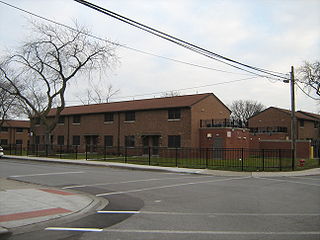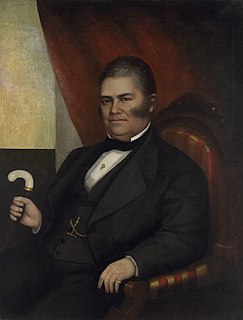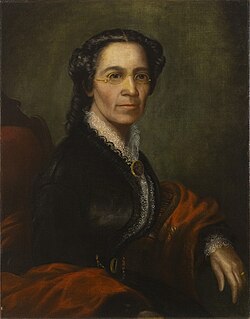Related Research Articles

Charles Tyson Yerkes Jr. was an American financier. He played a major part in developing mass-transit systems in Chicago and London.

John Alexander Logan was an American soldier and politician. He served in the Mexican–American War and was a general in the Union Army in the American Civil War. He served the state of Illinois as a state Representative, a Congressman, and a U.S. Senator and was an unsuccessful candidate for Vice President of the United States with James G. Blaine in the election of 1884. As the 3rd Commander-in-Chief of the Grand Army of the Republic, he is regarded as the most important figure in the movement to recognize Memorial Day as an official holiday.

Ida Bell Wells-Barnett was an American investigative journalist, educator, and early leader in the civil rights movement. She was one of the founders of the National Association for the Advancement of Colored People (NAACP). Over the course of a lifetime dedicated to combating prejudice and violence, and the fight for African American equality, especially that of women, Wells arguably became the most famous Black woman in America.

Julius Rosenwald was an American businessman and philanthropist. He is best known as a part-owner and leader of Sears, Roebuck and Company, and for establishing the Rosenwald Fund, which donated millions in matching funds to promote vocational or technical education. In 1919 he was appointed to the Chicago Commission on Race Relations. He was also the principal founder and backer for the Museum of Science and Industry in Chicago, to which he gave more than $5 million and served as president from 1927 to 1932.

William Levi Dawson was an American politician and lawyer who represented a Chicago, Illinois district for more than 27 years in the United States House of Representatives, serving from 1943 to his death in office in 1970. In 1949, he became the first African American to chair a congressional committee.

Oscar Stanton De Priest was an American politician and civil rights advocate from Chicago. A member of the Illinois Republican Party, he was the first African American to be elected to Congress in the 20th century. During his three terms, he was the only African American serving in Congress. He served as a U.S. Representative from Illinois' 1st congressional district from 1929 to 1935. De Priest was also the first African-American U.S. Representative from outside the southern states and the first since the exit of North Carolina representative George Henry White from Congress in 1901.

Chicago History Museum is the museum of the Chicago Historical Society (CHS). The CHS was founded in 1856 to study and interpret Chicago's history. The museum has been located in Lincoln Park since the 1930s at 1601 North Clark Street at the intersection of North Avenue in the Old Town Triangle neighborhood. The CHS adopted the name, Chicago History Museum, in September 2006 for its public presence.

Douglas, on the South Side of Chicago, Illinois, is one of Chicago's 77 community areas. The neighborhood is named for Stephen A. Douglas, Illinois politician and Abraham Lincoln's political foe, whose estate included a tract of land given to the federal government. This tract later was developed for use as the Civil War Union training and prison camp, Camp Douglas, located in what is now the eastern portion of the Douglas neighborhood. Douglas gave that part of his estate at Cottage Grove and 35th to the Old University of Chicago. The Chicago 2016 Olympic bid planned for the Olympic Village to be constructed on a 37-acre (15 ha) truck parking lot, south of McCormick Place, that is mostly in the Douglas community area and partly in the Near South Side.

Chatham is one of the 77 community areas of the city of Chicago, Illinois. It is located on the city's South Side. It includes the neighborhoods of Chatham-Avalon, Chatham Club, Chesterfield, East Chatham, West Chatham and the northern portion of West Chesterfield. Its residents are predominantly African American, and it is home to former Senator Roland Burris. Housing many city employees and other officials, Chatham has been a central area for Chicago's middle-class African Americans since the late 1950s.

Robert Sengstacke Abbott was an American lawyer, newspaper publisher and editor. Abbott founded The Chicago Defender in 1905, which grew to have the highest circulation of any black-owned newspaper in the country. An early adherent of the Baháʼí Faith in the United States, Abbott founded the Bud Billiken Parade and Picnic in August 1929. The parade, which has developed into a celebration for youth, education and African–American life in Chicago, Illinois, is the second largest parade in the United States.

Riverdale is one of the 77 official community areas of Chicago, Illinois and is located on the city's far south side.

John Mercer Langston was an American abolitionist, attorney, educator, activist, diplomat, and politician. He was the founding dean of the law school at Howard University and helped create the department. He was the first president of what is now Virginia State University, a historically black college. He was elected a U.S. Representative from Virginia and wrote From the Virginia Plantation to the National Capitol; Or, the First and Only Negro Representative in Congress From the Old Dominion.

West Englewood, one of the 77 community areas, is on the southwest side of Chicago, Illinois. At one time it was known as South Lynne. The boundaries of West Englewood are Garfield Blvd to the north, Racine Ave to the east, the CSX and Norfolk Southern RR tracks to the west, and the Belt Railway of Chicago to the south. Though it is a separate community area, much of the history and culture of the neighborhood is linked directly to the Englewood neighborhood.

The history of African Americans in Chicago dates back to Jean Baptiste Point du Sable’s trading activities in the 1780s. Du Sable, the city's founder, was Haitian of African and French descent. Fugitive slaves and freedmen established the city's first black community in the 1840s. By the late 19th century, the first black person had been elected to office.

Sheldon Peck was an American folk artist, conductor on the Underground Railroad, and social activist. Peck's portraiture – with its distinctive style — is a prime example of 19th century American folk art. He also become known for advocating abolitionism, racial equality, temperance, public education, women's rights, and pacifism.

Jean Baptiste Beaubien, a multi-lingual fur-trader born in Detroit, Michigan, became an early resident of what became Chicago, Illinois, as well as an early civic and militia leader in Cook County, Illinois during the Black Hawk War, before moving to Du Page County, Illinois in his final years.

The West Side is one of the three major sections of the city of Chicago in Cook County, Illinois, along with the North Side and the South Side. The West Side consists of communities that are of historical, cultural, and ideological importance to the history and development of Chicago. On the flag of Chicago, the West Side is represented by the central white stripe.

In the Chicago mayoral election of 1861, Republican Julian Sidney Rumsey defeated People’s nominee Thomas Barbour Bryan by a ten-point margin.

John Jones (1817–1879) was an American abolitionist, civil rights leader, philanthropist, and business entrepreneur. During his lifetime, he became the first black man in the state of Illinois to serve on a grand jury in 1870, a notary public in 1871, and the first to be elected to public office in 1871, when he was elected to the Cook County Commission.

Mary Jane Richardson Jones was an American abolitionist, philanthropist, and suffragist.
References
- ↑ Wilson, Cynthia (March 12, 2008). "John Jones (1817-1879) • BlackPast".
- ↑ Museum, Clarke House (February 29, 2012). "Clarke House Museum: John Jones and the Illinois Black Laws".
- ↑ "Jones, John | Encyclopedia.com". www.encyclopedia.com.
- 1 2 "Chicago Landmarks - Landmark Details". webapps1.chicago.gov.
- ↑ "Portrait of John Jones :: Museum Collection". digitalcollection.chicagohistory.org.
- ↑ "Portrait of Mrs. John Jones :: Museum Collection". digitalcollection.chicagohistory.org.